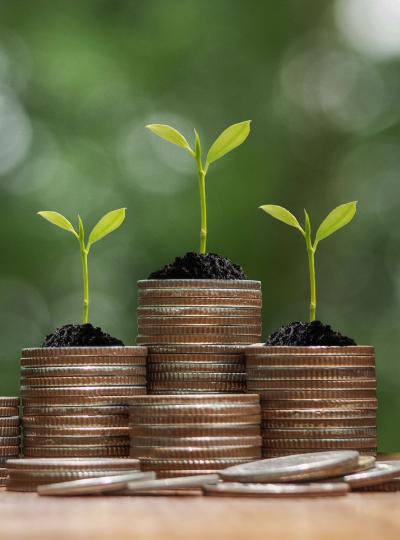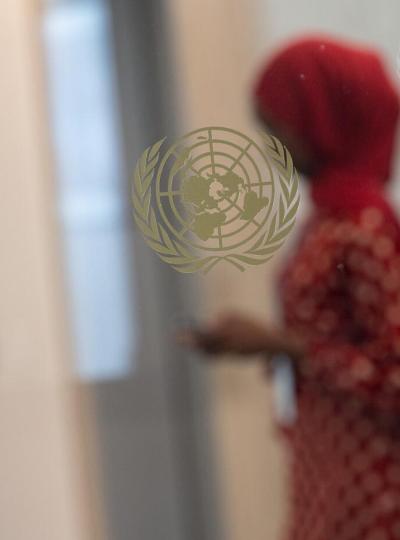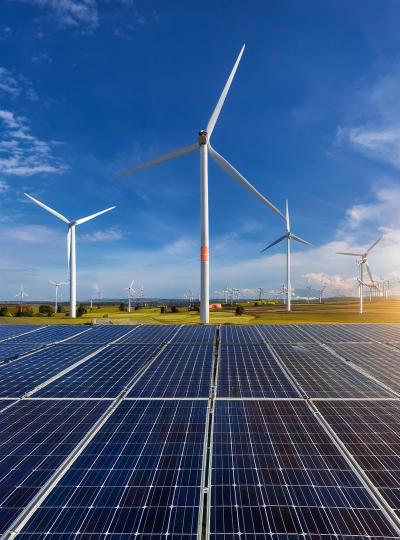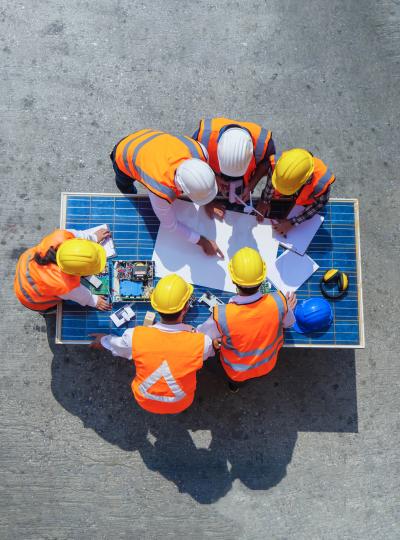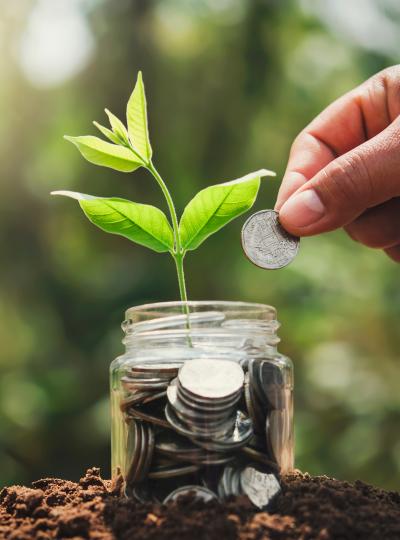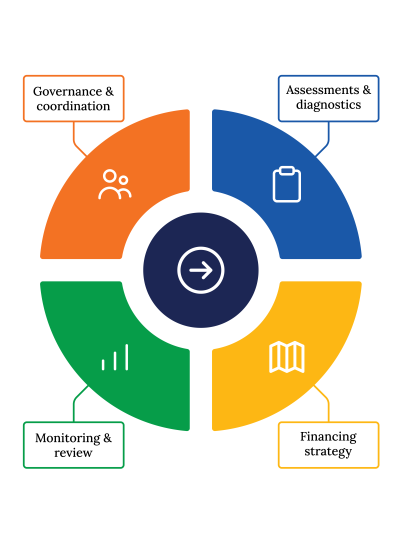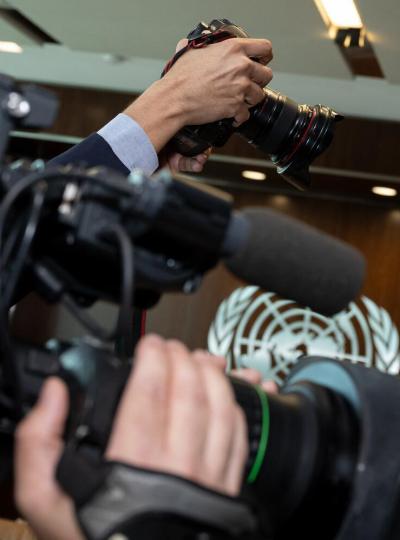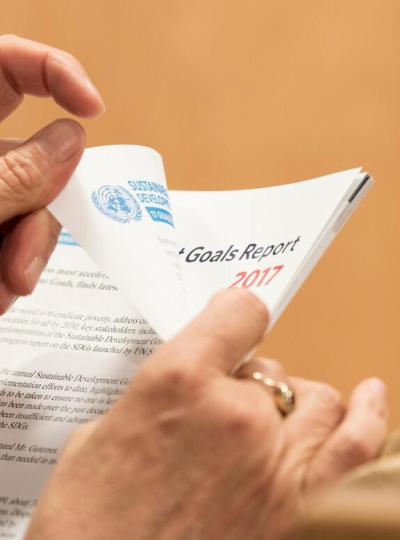Sustainable Solid Waste Management, Recycling, and Transformation
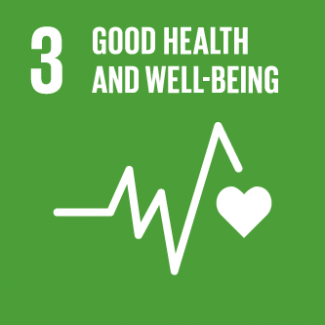
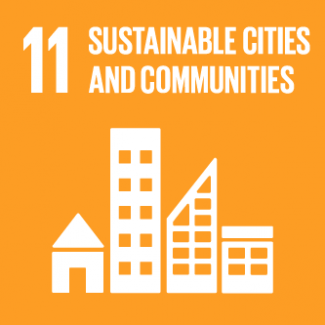
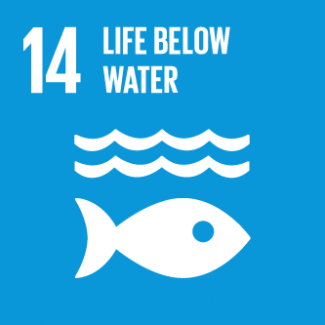
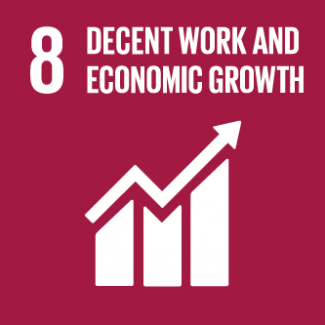
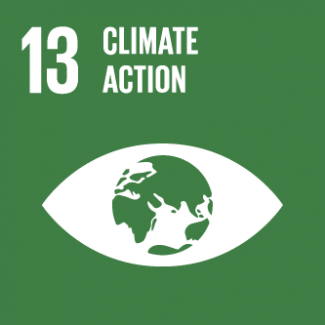
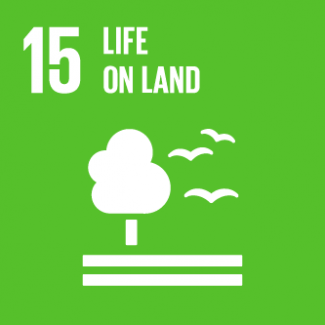
Business Model Description
Purchase or collect waste, notably plastic, and transform it into construction material (bricks, insulation material), furniture, and other goods which can be sold to the public. This can be carried out independently of government or public co-investment. Collection can also be charged to public authorities under a public-private partnership and generate a second stream of revenues, subject to authorization from the National Agency for Waste Collection (ANAGED). Payments are made per tonne processed or fixed, with retributions determined by annual contracts.
Expected Impact
Translate into better health outcomes, job creation, and long-lasting benefits for the planet resulting from a diminution of solid waste contamination of soils and seas.
How is this information gathered?
Investment opportunities with potential to contribute to sustainable development are based on country-level SDG Investor Maps.
Disclaimer
UNDP, the Private Finance for the SDGs, and their affiliates (collectively “UNDP”) do not seek or solicit investment for programmes, projects, or opportunities described on this site (collectively “Programmes”) or any other Programmes, and nothing on this page should constitute a solicitation for investment. The actors listed on this site are not partners of UNDP, and their inclusion should not be construed as an endorsement or recommendation by UNDP for any relationship or investment.
The descriptions on this page are provided for informational purposes only. Only companies and enterprises that appear under the case study tab have been validated and vetted through UNDP programmes such as the Growth Stage Impact Ventures (GSIV), Business Call to Action (BCtA), or through other UN agencies. Even then, under no circumstances should their appearance on this website be construed as an endorsement for any relationship or investment. UNDP assumes no liability for investment losses directly or indirectly resulting from recommendations made, implied, or inferred by its research. Likewise, UNDP assumes no claim to investment gains directly or indirectly resulting from trading profits, investment management, or advisory fees obtained by following investment recommendations made, implied, or inferred by its research.
Investment involves risk, and all investments should be made with the supervision of a professional investment manager or advisor. The materials on the website are not an offer to sell or a solicitation of an offer to buy any investment, security, or commodity, nor shall any security be offered or sold to any person, in any jurisdiction in which such offer would be unlawful under the securities laws of such jurisdiction.
Country & Regions
- Côte d'Ivoire: District Autonome d'Abidjan
- Côte d'Ivoire: Bas-Sassandra
- Côte d'Ivoire: District Autonome de Yamoussoukro
Sector Classification
Infrastructure
Development need
Côte d'Ivoire estimated its public investment financing needs at 15 billion USD over the period 2021-2025, notably to fund large infrastructure projects and digital technology. The coverage rate for cleaning services increased from 3.3% in 2018 to 10.4% in 2022, and remains limited in rural areas. Côte d'Ivoire's ICT Development Index was ranked 127th in the world in 2024, lower than the average for countries with the same level of GDP per capita (1, 7, 8).
Policy priority
The National Development Plan (2021-2025) aims to develop large infrastructure for large cities facing the challenge of rapid urbanization, including the construction of interchanges and 4,334 km of new roads, four recovery units for solid waste, and the extension of the 5,435 km fiber optic network (3, 8).
Gender inequalities and marginalization issues
Large infrastructure projects have significantly advanced the development of southern cities, but progress in northern rural areas remains modest, leading to persistent inequalities in access to basic amenities. Northern regions have high levels of multidimensional poverty and low rates of access to adequate sanitation. Ivorian women are particularly vulnerable to sanitation issues as 85.9% of them are in charge of the supply of water within their family (2, 3, 4, 5, 18).
Investment opportunities introduction
Côte d'Ivoire has one of the most developed road networks in West Africa, with a total of 82,612 km, aiming to invest 3,750 billion CFA Francs (USD 6.2 billion) over five years to modernize it. The market potential for ICT infrastructures is high, with a limited fixed penetration rate (1.4%) and revenues in the fixed internet industry rising 28.5% to USD 37 million in 2023 (5, 13, 14, 15).
Key bottlenecks introduction
Côte d'Ivoire faces a major infrastructure financing gap, worsened by rising public debt, which grew from 38.4% of GDP in 2019 to 58.1% in 2023, and a current deficit of 5.2%. This increases borrowing costs and affects public investment in major infrastructure projects, as the state is a major contractor for large-scale infrastructures. The construction sector also suffers from delays, with construction permits taking up to 163 days, above the regional average of 145 days (6, 16, 17).
Waste Management
Development need
Only 30% of solid waste is recycled in Abidjan, and 5% of plastics. This leads to illegal dumping and water contamination, and the proliferation of rodents and diseases. Daily waste production is estimated at 4,000 tons in Abidjan alone. At the national level, 60% of children cases of malaria, diarrhoea and pneumonia are caused by poor waste management (7, 8, 9, 11, 12).
Policy priority
Côte d'Ivoire's Nationally Determined Contributions (NDCs) aim to improve plastic waste management and reduce GHG emissions by 12.96% by 2030 compared to the baseline. In 2020, the country committed to banning plastic packaging by 2025, with plastic exports decreasing by 30% from 2018 to 2022. The government promotes corporate solutions to plastic pollution, as highlighted during World Environment Day 2023 (9, 10).
Gender inequalities and marginalization issues
Poor recycling, especially from plastic waste, leads to sanitary risks. Ingestion can alter gene expression and brain development, cause respiratory impairments and decrease fertility, particularly in women (9).
Investment opportunities introduction
The recycling market is estimated to be worth over 200 million USD in Côte d'Ivoire. The plastic sector alone employs 10,000 people in over 40 companies. In addition, Côte d'Ivoire still imports 300,000 tons of plastic every year, which could be sourced from recycled plastic at a cheaper cost and constituting an environment-friendly solution (9).
Key bottlenecks introduction
Logistical shortcomings hamper waste collection and the development of a circular economy. Plastic recycling also benefits from economies of scale, implying that recycled plastic could be more expensive than single-use imported plastics if the factories are not large enough. Despite a 2013 ban on single-use plastics, enforcement has been limited, especially in informal sectors where these products continue to dominate (10, 19).
Waste Management
Pipeline Opportunity
Sustainable Solid Waste Management, Recycling, and Transformation
Purchase or collect waste, notably plastic, and transform it into construction material (bricks, insulation material), furniture, and other goods which can be sold to the public. This can be carried out independently of government or public co-investment. Collection can also be charged to public authorities under a public-private partnership and generate a second stream of revenues, subject to authorization from the National Agency for Waste Collection (ANAGED). Payments are made per tonne processed or fixed, with retributions determined by annual contracts.
Business Case
Market Size and Environment
USD 100 million - USD 1 billion
According to the National Urban Sanitation Agency (Anasur), the recycling market in Côte d'Ivoire is estimated to be worth 120 billion CFA francs (over USD 200 million). Municipal waste is expected to grow by 70% from 2024 to 2050, providing additional gains linked to waste recovery (33, 42).
Indicative Return
15% - 20%
Benchmark investments in the Economic Community of West African States region (ECOWAS) indicate a return on investment between 15 to 25% (49).
Investment Timeframe
Short Term (0–5 years)
Solid waste recycling investments in the Western African region, including an example of plastic waste transformation into construction bricks, indicate that, taking into account equipment, variable costs and labor, the business can be profitable in two to four years (48, 49).
Ticket Size
USD 500,000 - USD 1 million
Market Risks & Scale Obstacles
Business - Supply Chain Constraints
Business - Supply Chain Constraints
Impact Case
Sustainable Development Need
Ivorians produce 0.64 kg of waste per day on average, against 0.46 kg for Sub-Saharan Africa. Unregulated waste disposal results in water pollution - impacting lagoons and ultimately marine life and birds - and coastal degradation (46).
60% of households dump solid waste in the street, while 48% dump sewage there. Waste dumping is correlated with disease prevalence, and notably malaria and diarrhoea, as it attracts insects and facilitates the proliferation of germs (20).
Typical risks incurred by illegal dumping include methane emissions and hazardous leachate, which can have a long-term impact on life expectancy and the development of respiratory diseases, which is a growing problem in Côte d'Ivoire (54 ,55).
Water contamination and waste accumulation pose a threat to economic activities such as tourism and fishing (57).
Gender & Marginalisation
Academic studies indicate that women are more vulnerable to disease and infections resulting from solid waste accumulation, notably plastic. This translates into lower fertility rate and is exacerbated by poverty levels (20).
Informal settlements in suburban areas and rural households are particularly affected by waste pollution, posing sanitary threats (54).
Expected Development Outcome
Solid waste recycling reduces the volume of waste disposed of improperly, helping to mitigate water pollution and coastal degradation. Reduced leakages of plastic debris avoid threats to aquatic organisms and disruptions of the food chain, which affects larger marine fauna and even human populations who rely on these waters for fishing and sustenance (54).
Recycling reduces the amount of waste dumped in the streets, helping to lower the prevalence of diseases like malaria and diarrhoea by reducing insect breeding grounds and germ proliferation.
The deployment of recycling solutions helps reduce waste accumulation and the emission of toxic gases, including methane, contributing to public health (54)
Solid waste recycling helps protect economic activities threatened by pollution, and creates additional opportunities in the collection, recycling, and logistic sectors. It can act as a lever for job creation (20, 54).
Gender & Marginalisation
The establishment of collection points and recycling plants in larger cities would lead to lower germs and rodents proliferation, benefiting women and poor households, which stand most affected (43).
Improving the collection and recycling system in suburban and rural areas would lead to improvements in health for the most affected populations (54).
Primary SDGs addressed

3.4.1 Mortality rate attributed to cardiovascular disease, cancer, diabetes or chronic respiratory disease
The probability of dying from any of CVD, cancer, diabetes, CRD between age 30 and exact age 70 was 22% in 2019 (40).
At the global level, the objective is to reduce by one third by 2030, through prevention and treatment, the rate of premature mortality due to non-communicable diseases and promote mental health and well-being (22).

11.6.1 Proportion of municipal solid waste collected and managed in controlled facilities out of total municipal waste generated, by cities
Recycling estimates vary between cities and waste types. For plastic, the United Nations International Children's Emergency Fund (UNICEF) estimates that Abidjan recycles only 5% of the total (11).
N/A

14.1.1 (a) Index of coastal eutrophication; and (b) plastic debris density
In Côte d'Ivoire, plastic waste leaks into the environment at a rate of 12,748.40 kg daily (56).
The government has signed an agreement to ban all plastic packaging by 2025 (24).
Secondary SDGs addressed



Directly impacted stakeholders
People
Gender inequality and/or marginalization
Planet
Corporates
Public sector
Indirectly impacted stakeholders
People
Gender inequality and/or marginalization
Planet
Corporates
Public sector
Outcome Risks
Without proper monitoring, recycling companies can pose environmental and health risks to the surrounding communities. Waste can leach into soil and groundwater, affecting drinking water supplies and harming local ecosystems (60).
Formalizing waste management systems may displace informal workers, who play a key role in waste collection and recycling, impacting their livelihoods and creating socioeconomic challenge (59).
Workers in waste collection and recycling, which is a sector dominated by women who earn low incomes, are exposed to hazardous materials (e.g., sharp objects, toxic chemicals, infectious waste) without adequate protective gear (62).
Impact Risks
Lack of public awareness and participation can hinder recycling programs, leading to continued improper waste disposal from local communities.
If recycling is not accompanied by a general policy to curb imports of plastic and single-use plastic goods, this may result in a stagnation or increasing total consumption despite recycling efforts.
Gender inequality and/or marginalization risk: If collection and recycling is confined to the big cities, particularly Abidjan, there could be a widening of the regional divide and sustained pollution of marine ecosystems.
Impact Classification
What
Improved solid waste collection and recycling would lead to better health and environmental outcomes as well as job creation.
Who
The general population would benefit, especially households from poor suburban areas, women, and children. The planet benefits from lower pollution levels.
Risk
Inadequate public awareness and lack of policies limiting plastic imports can undermine recycling programs, leading to improper waste disposal and stagnant or rising plastic consumption.
Contribution
Investments in recycling replace informal waste collection, which have lower recycling rates and produce limited output.
How Much
The Ministry of Sanitation and Hygiene aims to create 10 regional hubs for solid waste recycling and recovery. In addition, the government targets an improvement in solid waste collection in Abidjan, to 95% of the total (45).
Impact Thesis
Translate into better health outcomes, job creation, and long-lasting benefits for the planet resulting from a diminution of solid waste contamination of soils and seas.
Enabling Environment
Policy Environment
The National Solid Waste Management Program (Programme National de Gestion des Déchets Solides) promotes solid waste recycling and supports the implementation of the Basel and Bamako Conventions. It focuses on managing hazardous and industrial waste, e-waste, packaging waste, lead-acid batteries, and used tires, while also raising public awareness on eco-friendly waste practices (44).
Côte d'Ivoire’s Nationally Determined Contributions (NDC) prioritize enhancing waste collection and urban sanitation, alongside promoting the sustainable management and recovery of waste as essential pillars of the country's environmental strategy (14).
The Urban Sanitation and Resilience Project (Projet d'Assainissement et de Resilience Urbaine) aims to improve solid waste management in Abidjan through recycling and valorisation initiatives, aiming to create economic value, reduce poverty, and support environmental sustainability in line with Côte d’Ivoire's development goals (28).
The National Short-Lived Climate Pollutant (SLCP) Action Plan (2019) aims to reduce emissions of black carbon, methane, and other pollutants through improved waste management practices, including recycling. It targets a 30% reduction in methane emissions from waste by 2030 (31).
The Sanitary Waste Management Plan (Plan de Gestion des Déchets Sanitaires) ambitions to improve the management of sanitary waste, with the aim of improving the health of young children and women (32).
Financial Environment
Financial incentives: A tax credit is granted for the four years following the investment's completion. This credit amounts to 10% of the investment but cannot exceed 50% of the taxable profits, providing a direct incentive for companies to invest in waste recycling (26).
Fiscal incentive: Ordinance No. 2019-1087 aims to improve sanitation and solid waste management by increasing the portion of property tax allocated to sanitation funding from 25% to 50% dedicated funds to it (61).
Other incentives: Several repurchase and recycling agreements concerning plastic wastes have been signed by the government, including the recycling of 40,000 tons of plastic waste by 700 war veterans in the communes of Yopougon, Attécoubé and Abobo (25, 47).
Other incentives: In 2020, the World Bank approved a USD 315 million credit to Côte d'Ivoire to prevent flood risks and improve the quality of solid waste management in Abidjan and other cities (27).
Regulatory Environment
Decree No. 2013-327 on Plastic Waste bans the import, production, use, and sale of non-biodegradable plastic bags, aiming to reduce plastic waste. The ban includes penalties for polluters, with fines up to 1 million CFA francs (USD 1,650) (9, 29).
The new Environment Code, enacted in 2014, sets regulations for the recycling and elimination of waste. It notably enounces that burial of non-toxic waste can only take place after authorisation, and subject to compliance with the technical requirements and specific defined by decree (38).
Decree No. 2017-692 created the Agence Nationale de Gestion des Déchets (ANAGED) (National Waste Management Agency), whose purpose is to coordinate the actions of all key players in the waste management sector (37).
Order No. 2 MVSU (January 12th, 2010) mandates that the National Waste Management Agency (ANAGED) issues permits for the collection and transportation of private waste (50).
Ordinance No. 2019-1087 of December 18, 2019 includes the levying of several taxes on certain plastic products (24).
Marketplace Participants
Private Sector
Recyclage.CI, Association Ivoirienne de valorisation des déchets plastiques (AVIP), AfricWaste, Veolia, Confédération Générale des Entreprises de Côte d’Ivoire (CGECI), Coliba, Recyplast, SN Kanian Technologies, ECOTI SA.
Government
Agence de gestion et de développement des infrastructures industrielles, Agence nationale de Gestion des Déchets, Centre ivoirien antipollution (CIAPOL), Agence Nationale de Salubrité Urbaine, Centre de Promotion des Investissements en Côte d’Ivoire (CEPICI).
Multilaterals
United Nations Environment Programme (UNEP), United Nations International Children's Emergency Fund (UNICEF), United Nations Development Programme (UNDP), World Bank.
Non-Profit
Monde nouveau, Oceanography Research Center of Abidjan, Deutsche Gesellschaft für Internationale Zusammenarbeit (GiZ).
Public-Private Partnership
ECOTI.SA concluded a partnership in 2024 with the Ministry of Hydraulics, Sanitation, and Public Health (MINHAS) and the National Waste Management Agency (ANAGED) to contribute to waste collection and management during the Africa Cup of Nations, cleaning 7,250 km of road (41).
Target Locations
Côte d'Ivoire: District Autonome d'Abidjan
Côte d'Ivoire: Bas-Sassandra
Côte d'Ivoire: District Autonome de Yamoussoukro
References
- (1) Les Echos. 2022. La Côte d'Ivoire mobilise 26 milliards pour son plan de développement. https://www.lesechos.fr/monde/afrique-moyen-orient/la-cote-divoire-mobilise-26-milliards-pour-son-plan-de-developpement-1414787#:~:text=La%20C%C3%B4te%20d%27Ivoire%20estimait,bilat%C3%A9raux%20et%20multilat%C3%A9raux%20de%20d%C3%A9veloppement.
- (2) World Bank. 2022. Côte d’Ivoire : Nouvelle stratégie pour un réseau routier intégré et résilient. https://www.banquemondiale.org/fr/results/2022/07/11/afw-cote-divoire-new-strategy-for-inclusive-and-resilient-road-connectivity
- (3) Gouvernement de la Côte d'Ivoire. 2021. Plan National de Développement PND 2021-2025. https://dcf.ci/dcf.ci/wp-content/uploads/2021/09/PND-2021-2025_Tome-1_Diagnostic-strate%CC%81gique.pdf
- (4) Le Monde. 2020. En Côte d'Ivoire, une économie dynamique mais à deux vitesses. https://www.lemonde.fr/afrique/article/2020/10/30/en-cote-d-ivoire-une-economie-dynamique-mais-a-deux-vitesses_6057907_3212.html
- (5) Jeune Afrique. 2020. Côte d'Ivoire - Coup de jeune sur les infrastructures. https://www.jeuneafrique.com/mag/1033786/economie-entreprises/serie-cote-divoire-coup-de-jeune-sur-les-infrastructures-9-10/
- (6) BNP Paribas. 2023. Côte d'Ivoire. Une résistance mise à rude épreuve. https://economic-research.bnpparibas.com/html/fr-FR/Cote-Ivoire-resistance-rude-epreuve-12/07/2023,48761#:~:text=Surtout%2C%20l%27investissement%20a%20affich%C3%A9,a%20jamais%20%C3%A9t%C3%A9%20aussi%20%C3%A9lev%C3%A9.
- (7) International Telecommunication Union. 2024. Measuring digital development The ICT Development Index 2024. https://www.itu.int/dms_pub/itu-d/opb/ind/d-ind-ict_mdd-2024-3-pdf-e.pdf
- (8) Ministère de l'Economie, du Plan et du Développement. 2023. Plan National de Développement 2021-2025. Rapport Annuel 2023.
- (9) UNEP. 2023. La Côte d'Ivoire veut en finir avec la pollution plastique. https://www.unep.org/fr/actualites-et-recits/recit/la-cote-divoire-veut-en-finir-avec-la-pollution-plastique
- (10) Gouvernement de la Côte d'Ivoire. 2022. Contributions Déterminées au niveau National (CDN) de la Côte d'Ivoire. https://unfccc.int/sites/default/files/NDC/2022-06/CDN_CIV_2022.pdf
- (11) UNICEF. Une usine de briques en plastique recyclé pour construire des salles de classe. https://www.unicef.fr/article/cote-divoire-une-usine-de-briques-en-plastique-recycle-pour-construire-des-salles-de-classe/
- (12) FAO. 2023. Circular bioeconomy in Abidjan: from food waste to the fork BioDAF Project. https://www.fao.org/3/cc6593en/cc6593en.pdf
- (13) ARTCI. 2024. Abonnement à l'internet. https://www.artci.ci/index.php/marches-regules/11-observatoire-du-secteurs-des-telecoms/service-internet/75-abonnes-service-internet.html
- (14) Team France Export. 2024. Le Marché des travaux publics en Côte-d'Ivoire. https://www.teamfrance-export.fr/fiche-marche/infrastructures/travaux-publics/CI
- (15) Team France Export. 2024. Le Marché des télécoms, internet et broadcast en Côte-d'Ivoire. https://www.teamfrance-export.fr/fiche-marche/tech/telecom-internet-et-broadcast/CI
- (16) Direction générale du Trésor (France). 2024. Côte d'Ivoire - Situation économique et financière. https://www.tresor.economie.gouv.fr/Pays/CI/situation-economique-et-financiere
- (17) Oxford Business Group. 2020. What's supporting Côte d'Ivoire's construction sector. https://oxfordbusinessgroup.com/reports/cote-divoire/2020-report/economy/evolving-strategy-building-on-strong-public-infrastructure-investment-the-state-is-looking-to-bolster-growth-by-attracting-private-funding
- (18) Habitat for humanity. 2016. Côte d´Ivoire: Water Pumps, Toilets & Hygiene Training. https://www.habitatforhumanity.org.uk/blog/2016/09/cote-divoire-water-pumps-toilets-hygiene-training/
- (19) Casabee. 2016. PARO CI. Formaliser les filières de recyclage. https://www.casabee.eu/wp-content/uploads/2016/05/PARO-CI-recube.pdf
- (20) Possilétya, J. et al. 2019. Risques sanitaires liés aux déchets ménagers sur la population d’Anyama (Abidjan-Côte d’Ivoire). https://journals.openedition.org/vertigo/24417#quotation
- (21) WHO. 2024. Probability of premature mortality from NCDs. https://data.who.int/indicators/i/C540135/1F96863
- (22) UN. 2024. Objectif 3 : Permettre à tous de vivre en bonne santé et promouvoir le bien-être de tous à tout âge. https://www.un.org/sustainabledevelopment/fr/health/
- (23) RTL. 2023. Pollution, 85% des déchets marins sont du plastique. https://www.rtl.fr/actu/debats-societe/pollution-85-des-dechets-marins-sont-du-plastique-7900320032
- (24) UNEP. 2023. Côte d'Ivoire sets sights on plastic pollution. https://www.unep.org/news-and-stories/story/cote-divoire-sets-sights-plastic-pollution
- (25) Open Environmental Data. 2020. Regulations, actions and management process for plastic waste in Côte d'Ivoire, West Africa. https://www.openenvironmentaldata.org/pilots/regulations-actions-and-management-process-for-plastic-waste-in-cote-divoire-west-africa-2
- (26) PWC. 2023.. Corporates - Tax credits and incentives. https://taxsummaries.pwc.com/ivory-coast/corporate/tax-credits-and-incentives
- (27) World Bank. 2020. Côte d’Ivoire : La Banque mondiale débourse 315 millions dollars pour booster la gestion des déchets et réduire les risques d’inondation dans les grandes villes. https://www.banquemondiale.org/fr/news/press-release/2020/06/12/cote-divoire-la-banque-mondiale-debourse-315-millions-dollars-pour-booster-la-gestion-des-dechets-et-reduire-les-risques-dinondation-dans-les-grandes-villes#:~:text=WASHINGTON%2C%2012%20juin%202020%E2%80%94%20Le,%C3%A9conomique%20Abidjan%20et%20les%20grandes
- (28) République de Côte d'Ivoire. 2020. PROJET D’ASSAINISSEMENT ET DE RESILIENCE URBAINE (PARU). https://www.prici.ci/media/k2/attachments/2003192012.pdf
- (29) Présidence de la République. 2013. DECRET W2013-327 DU 22 MAl 2013 PORTANT INTERDICTION DE LA PRODUCTION, DE L'IMPORTATION, DE LA COMMERCIALISATION, DE LA DETENTION ET DE L'UTILISATION DES SACHETS PLASTIQUES. https://faolex.fao.org/docs/pdf/IVC132141.pdf "30) Kouassi, H. K. et al. 2022. Life Cycle Analysis and Cost–Benefit Assessment of the Waste Collection System in Anyama, Cote d’Ivoire. https://doi.org/10.3390/su142013062 "
- (31) République de Côte d'Ivoire. 2020. NATIONAL ACTION PLANNING DOCUMENT FOR THE REDUCTION OF SHORT-LIVED CLIMATE POLLUTANTS (SLCP). https://www.ccacoalition.org/sites/default/files/policy-documents/National%20Action%20Planning%20Document%20for%20SLCP%20mitigation%20in%20Co%CC%82te%20d%27Ivoire_Summary%20English%2017-01-2020.pdf
- (32) République de Côte d'Ivoire. 2023. PLAN DE GESTION DES DECHETS SANITAIRES (PGDS). https://www.sante.gouv.ci/assets/fichiers/plan-gestion-des-dechets-sanitaires-civ-psndpe-p17955-final.pdf
- (33) Afrik 21. 2020. COTE D’IVOIRE: GreenTec invests in recycling specialist startup Coliba. https://www.afrik21.africa/en/cote-divoire-greentec-invests-in-recycling-specialist-startup-coliba/
- (34) Recyclage.CI. 2024. https://www.recyclage.ci/#clients
- (35) Recyplast. 2024. Produits. https://recyplast.ci/espace-entreprise/produits/
- (36) Jeune Afrique. 2023. Quel avenir pour le plastique en Afrique ? https://www.jeuneafrique.com/1454914/economie-entreprises/quel-avenir-pour-le-plastique-en-afrique/
- (37) Présidence de la République. 2017. DECRET n° 2017-692 du 25 octobre 2017 portant creation, attributions, organisation etfonctionnement de I 'etab/issement public a caractere industriel et commercial, denomme Agence nationale de Gestion des Dechets (ANA GED). https://faolex.fao.org/docs/pdf/Ivc176854.pdf
- (38) Ministère de l'Environnement et du Développement Durable. 2022. Nouveau Code de l'Environnement 2014. https://environnement.gouv.ci/wp-content/uploads/2022/01/NOUVEAU-CODE-ENVIRONNEMENT-revis-u00AEdefinitif-20-11-2014-final-1.pdf
- (39) Africa News. 2023. Côte d'Ivoire : une usine de recyclage des déchets plastiques à Bouaké. https://fr.africanews.com/2023/05/22/cote-divoire-une-usine-de-recyclage-des-dechets-plastiques-a-bouake//
- (40) VOA Afrique. 2023. À Abidjan, des citoyens s'attaquent à la pollution plastique. https://www.voaafrique.com/a/a-abidjan-des-initiatives-citoyennes-face-au-fl%C3%A9au-de-la-pollution-plastique/7123439.html
- (41) Sika Finance. 2024. ECOTI.SA, le 15éme joueur en charge de la propreté des sites de la CAN à Abidjan. https://www.sikafinance.com/marches/ecotisa-le-15eme-joueur-en-charge-de-la-proprete-des-sites-de-la-can-a-abidjan_44847
- (42) The Conversation. 2022. Gestion des déchets en Côte d'Ivoire, l'immense potentiel de l'économie circulaire. https://theconversation.com/gestion-des-dechets-en-cote-divoire-limmense-potentiel-de-leconomie-circulaire-194698
- (43) Duh, D. et al. 2017. The impact of illegal waste sites on a transmission of zoonotic viruses. https://pmc.ncbi.nlm.nih.gov/articles/PMC5520353/
- (44) Ministère de l'Environnement et du Développement Durable. [Undated]. Liste des programmes logés au ministère de l’Environnement et du Développement durable. https://environnement.gouv.ci/wp-content/uploads/2022/02/Programmes-de-la-CGPP.pdf
- (45) UN Habitat. 2022. Côte d'Ivoire - Abidjan. https://unhabitat.org/sites/default/files/2022/07/abidjan_fr.pdf
- (46) GiZ. 2020. Partnership Ready Côte d’Ivoire: Gestion et recyclage des déchets organiques. https://www.giz.de/en/downloads/GBN_Sector%20Brief_CIV_Bioabfall_FR_Web.pdf
- (47) Gouvernement de Côte d'Ivoire. 2014. Industrie du plastique : une convention signée pour le recyclage de 40.000 tons de déchets annuels par 700 ex-combattants réinsérés. https://www.gouv.ci/_actualite-article.php?d=4&recordID=4796&p=231
- (48) Agence Ecofin. 2022. Lancer son entreprise de recyclage de déchets. https://www.agenceecofin.com/lancer-son-entreprise/2111-71345-lancer-son-entreprise-de-recyclage-de-dechets
- (49) Africa for Investors. [Undated]. Waste Recycling IPRFZ | Special Economic Zone. https://africaforinvestors.com/sectors/waste-recycling/nigeria/Industrial-Platform-Remo-Free-Zone-IPRFZ
- (50) ANAGED. 2022. Suivi et délivrance des agréments pour la gestion des déchets privés. https://anaged.net/suivi-et-delivrance-des-agrements-pour-la-gestion-des-dechets-prives/#:~:text=Au%20titre%20de%20l%27arr%C3%AAt%C3%A9,de%20transport%20des%20d%C3%A9chets%20priv%C3%A9s.
- (51) Le 360 Afrique. 2024. Environnement: plusieurs initiatives présentées à Abidjan pour une économie circulaire efficiente. https://afrique.le360.ma/economie/environnement-plusieurs-initiatives-presentees-a-abidjan-pour-une-economie-circulaire-efficiente_PZPR6YI2M5BDTPIZHO6HQZB6BA/
- (52) Afrik 21. 2022. CÔTE D’IVOIRE : le lac San Pedro sera aménagé pour lutter contre la pollution. https://www.afrik21.africa/cote-divoire-le-lac-san-pedro-sera-amenage-pour-lutter-contre-la-pollution/
- (53) Issa, B. K. et al. 2022. Lacs artificiels et risques sanitaires dans la ville de Yamoussoukro. https://regardsuds.org/lacs-artificiels-et-risques-sanitaires-dans-la-ville-de-yamoussoukro/
- (54) Abubakar, I. R. et al. 2022. Environmental Sustainability Impacts of Solid Waste Management Practices in the Global South. https://pmc.ncbi.nlm.nih.gov/articles/PMC9566108/
- (55) Koffi, L. O. et al. 2020. Caractéristiques de la pathologie respiratoire dans les centres de santé secondaires d’Abidjan. https://www.sciencedirect.com/science/article/abs/pii/S1877120319316611
- (56) WACA Programme. 2020. Côte d'Ivoire. https://www.wacaprogram.org/sites/waca/files/knowdoc/C%C3%B4te%20d%E2%80%99Ivoire%20plastic%20country%20brief.pdf
- (57) Gouvernement de la Côte d'Ivoire. 2022. LUTTE CONTRE LA POLLUTION PLASTIQUE : LE GOUVERNEMENT EST DETERMINE A PROMOUVOIR UN CADRE DE VIE PROPRE ET SAIN. https://www.gouv.ci/_actualite-article.php?recordID=13758
- (58) PSEAU. 2004. Gestion durable des déchets et de l’assainissement urbain. https://www.pseau.org/outils/ouvrages/pseau_gestion_durable_dechets_assainissement.pdf
- (59) The Conversation. 2022. Gestion des déchets : en Côte d’Ivoire, l’immense potentiel de l’économie circulaire. https://theconversation.com/gestion-des-dechets-en-cote-divoire-limmense-potentiel-de-leconomie-circulaire-194698
- (60) H2O. 2024. How do municipal wastes contribute to water pollution? https://h2oglobalnews.com/how-do-municipal-wastes-contribute-to-water-pollution/
- (61) Présidence de la République. 2019. ORDONNANCE n° 2019-1087 du 18 Décembre 2019 modifiant les modalités de fixation de la clé de répartition du produit de l'impôt sur le patrimoine foncier. https://www.juriafrica.com/lex/ordonnance-2019-1087-18-decembre-2019-33533.htm
- (62) Akely, J. M. R. et al. 2024. Caractéristiques socioculturelles des actrices de la récupération informelle des plastiques dans le district autonome d'Abidjan. https://www.researchgate.net/publication/382048915_Caracteristiques_socioculturelles_des_actrices_de_la_recuperation_informelle_des_plastiques_dans_le_district_autonome_d'Abidjan

